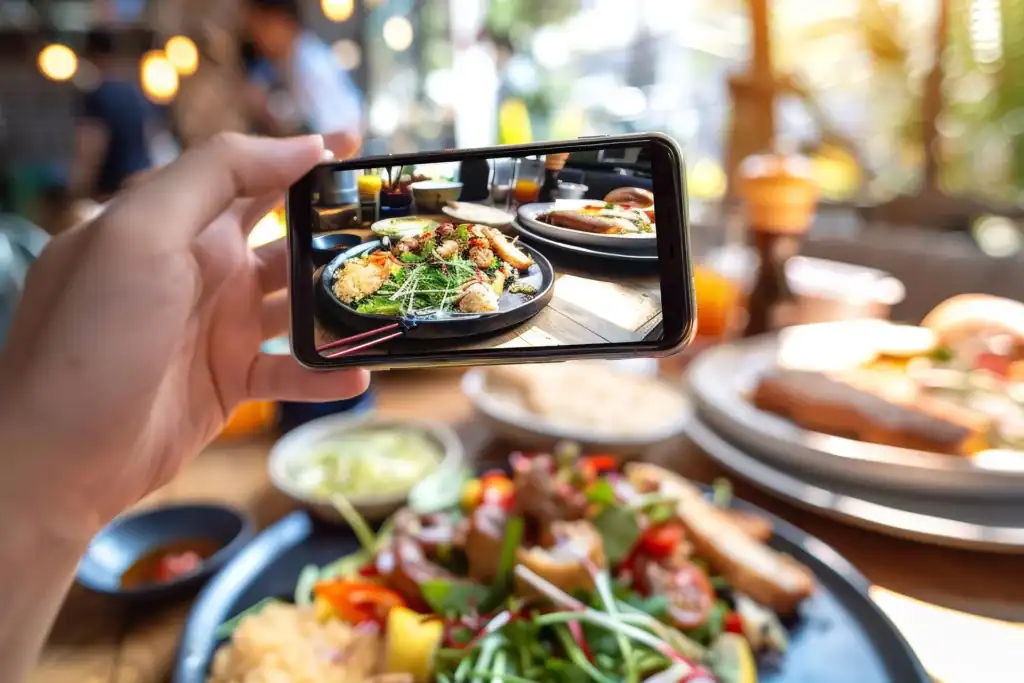Originally published in Restaurant Hospitality Magazine, read the article here.
The other night a new commercial for a restaurant chain caught my attention. It wasn’t the content nor was it the offer that snatched my curiosity, but rather the utter monotony and lack of anything new. The moment sparked a dive into my mental catalog of restaurant advertising and marketing, and one glaringly blatant commonality sprang out: Something vital is missing.
Restaurants are pretty good at following the “rules” of advertising and marketing. Show your product to create enticement. Offer a deal to woo a new trial or lukewarm previous customer. Create excitement and put it on for a limited time to “act now before it’s too late.” For decades this playbook was successful, but the game has evolved. It’s no longer enough, and the reason is both simple and complex. It’s devoid of any emotional tie or offering beyond the restaurant’s core offering: food.
Things have changed in consumer perceptions of brands. In general, they don’t trust advertising. Scandals in ethics, poor quality of food and the proliferation of the effects of processed products have corroded the legitimacy of restaurant brands. Traditional advertising has become akin to listening to a politician on his podium. It invokes skepticism and, as a result, gets tossed aside as mostly false or a downright lie in some extreme cases. One thing is left floating in the consumer’s mind: “So what? Prove it.”
Furthermore, product-focused advertising is all about the brand and not about consumers and their lifestyle. It’s an entirely selfish, “me-me-me” mentality, which makes it easy to ignore. Think about it. When is the last time you ever engaged with a person who told you how amazing they were? “Hi, I’m Joseph. I’m the coolest guy you’ll ever meet.” I’m surprised you got through that sentence without wanting to walk away. Restaurants must shift their focus to the consumer’s lifestyle and attitude, and what their product does to enhance them. Brands that do this successfully—such as Chipotle, Starbucks and Apple—have created a connection that’s hard to break, thereby fostering loyalty and brand evangelism.
Something bigger must be present beyond the latest ad campaign to not just attract, but also connect with consumers. Having a passion for something beyond the core product helps brands rise above competitors that focus on price and product alone. In the extremely aggressive and saturated restaurant industry this passionate purpose elevates a brand above the din.
A passionate purpose creates an emotional connection engrained in the company’s culture from the top down, inside to the outside. It permeates through every part of the business. In order to follow suit, a brand has to stop squawking flimsy promises and start walking the walk. That’s a tall order for any company, but one that is vital for gaining market share or halting a decline in some severe cases.
So, where does a brand start? Here are three tips to start the shift from product-centric marketing to emotional communications that are driven by a passionate purpose.
1. Toss the food focus and dig deeper to focus on people.
Although a good product is important, and showing your delicious glory shots of food shouldn’t stop, people are attracted to brands that reflect core values and beliefs that align with their own. They buy from brands that bolster and communicate their lifestyle and attitude. When someone buys a Starbucks coffee, it represents his or her busy lifestyle and concurrent need for catering to his or her specific demands. Think of the person who orders a double grande latte, skinny, heated to 130°. That is someone with demands and little time. The Starbucks brand represents a status that consumers wish to convey to the world, and that statement is what attracts and retains their loyal patrons.
2. Pinpoint a passionate purpose that connects with consumers.
Finding and pinpointing a passionate purpose may be something that comes easily to some brands, but can be much harder for others. It’s not as simple as brainstorming ideas in a room. It has to make sense and connect with people, while being legitimate and authentic. That only comes from in-depth consumer insights, brand strategy development and a dedication to threading the passionate purpose throughout the organization. Missing the mark won’t necessarily hurt a brand much, but sticking the landing will make all the difference.
3. Inject that purpose throughout every part of the business.
Chipotle’s renowned dedication to sustainable products, sourcing and the fair treatment of livestock connects with consumer interests because they live that passionate purpose. Chipotle has done little on-air advertising, instead relying on their actions to spark word of mouth. Actions do speak louder than words, especially in a situation where credibility is in question. Chipotle’s actions across the board add weight and credibility to their passionate purpose.
Considerations for purchase have increased in complexity. They have less to do with a restaurant’s product or deal, and more to do with what buying the brand communicates to world on behalf of the consumer. While good food and service are important, they have reached parity, leaving people looking for a larger reason to patronize one brand versus another. Brands like Starbucks and Chipotle convey a status that connects with consumers beyond utilitarian food offering. They tap into emotions that are bolstered throughout their respective companies, and it’s that emotion that needs to be injected into restaurant brand marketing. That’s the missing ingredient.

